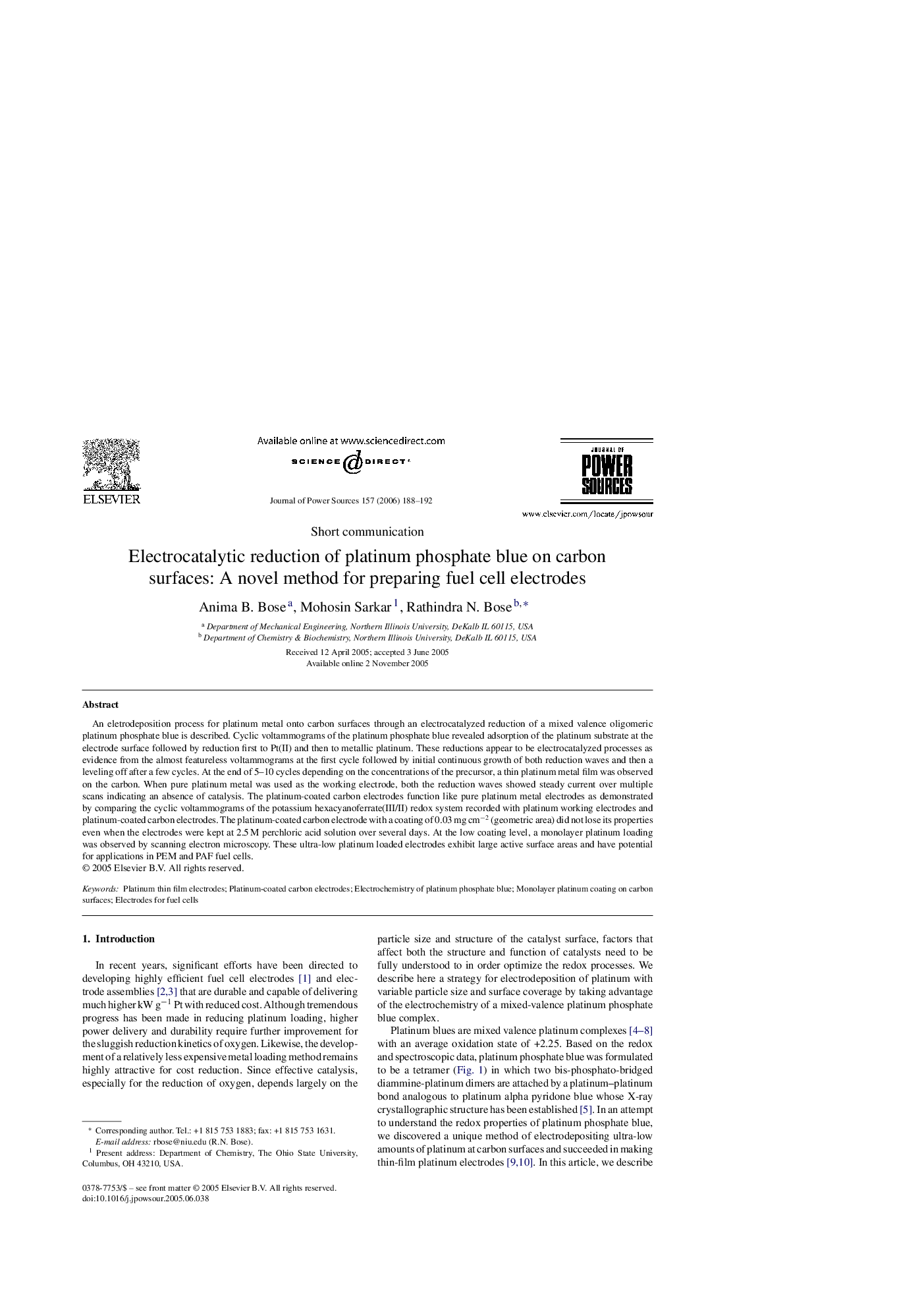| Article ID | Journal | Published Year | Pages | File Type |
|---|---|---|---|---|
| 1292660 | Journal of Power Sources | 2006 | 5 Pages |
An eletrodeposition process for platinum metal onto carbon surfaces through an electrocatalyzed reduction of a mixed valence oligomeric platinum phosphate blue is described. Cyclic voltammograms of the platinum phosphate blue revealed adsorption of the platinum substrate at the electrode surface followed by reduction first to Pt(II) and then to metallic platinum. These reductions appear to be electrocatalyzed processes as evidence from the almost featureless voltammograms at the first cycle followed by initial continuous growth of both reduction waves and then a leveling off after a few cycles. At the end of 5–10 cycles depending on the concentrations of the precursor, a thin platinum metal film was observed on the carbon. When pure platinum metal was used as the working electrode, both the reduction waves showed steady current over multiple scans indicating an absence of catalysis. The platinum-coated carbon electrodes function like pure platinum metal electrodes as demonstrated by comparing the cyclic voltammograms of the potassium hexacyanoferrate(III/II) redox system recorded with platinum working electrodes and platinum-coated carbon electrodes. The platinum-coated carbon electrode with a coating of 0.03 mg cm−2 (geometric area) did not lose its properties even when the electrodes were kept at 2.5 M perchloric acid solution over several days. At the low coating level, a monolayer platinum loading was observed by scanning electron microscopy. These ultra-low platinum loaded electrodes exhibit large active surface areas and have potential for applications in PEM and PAF fuel cells.
